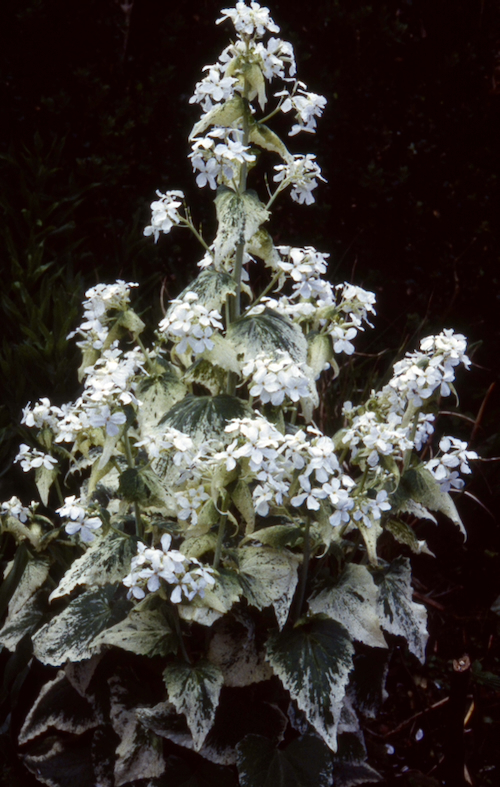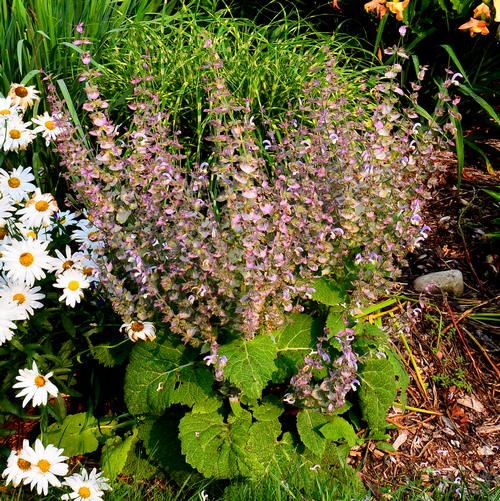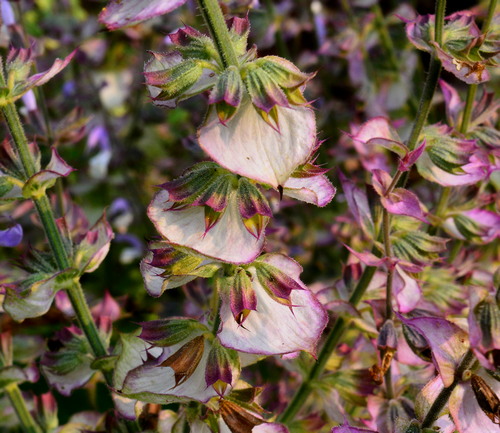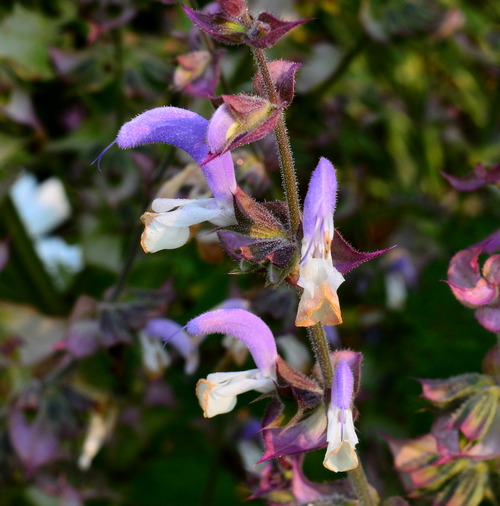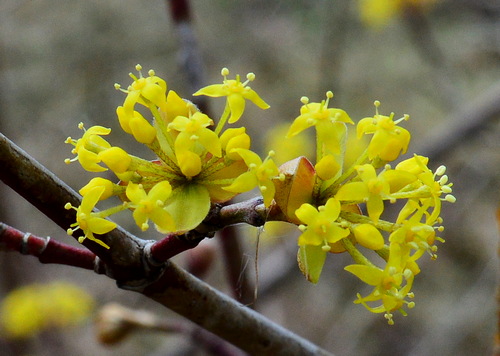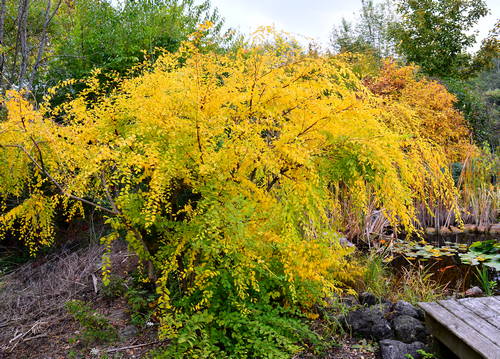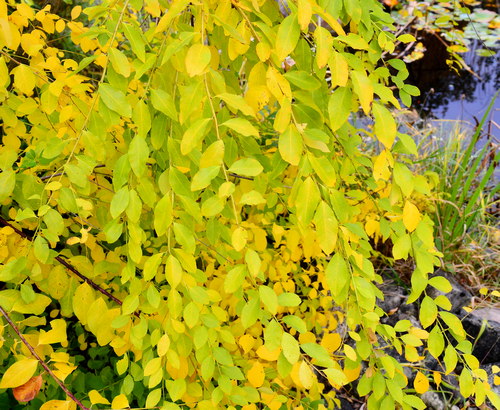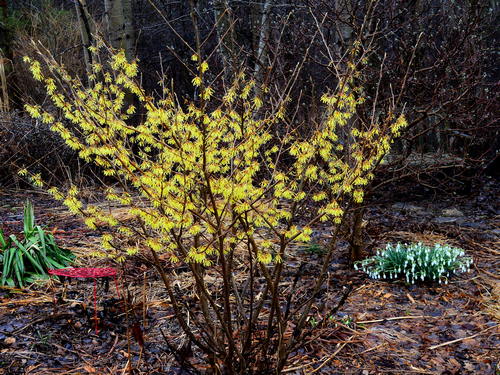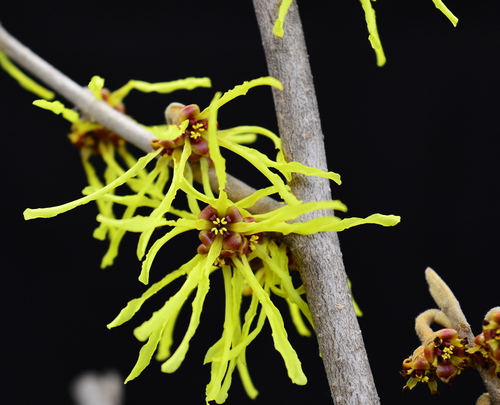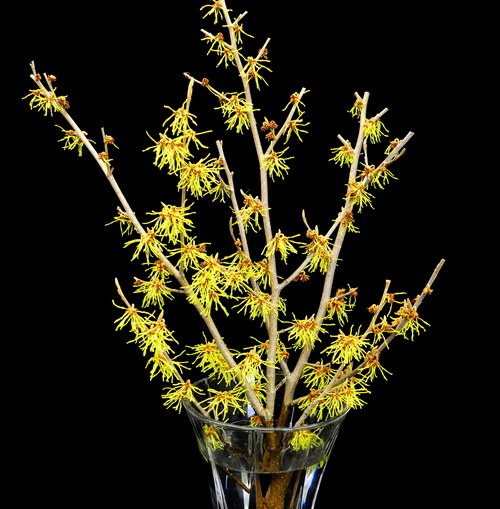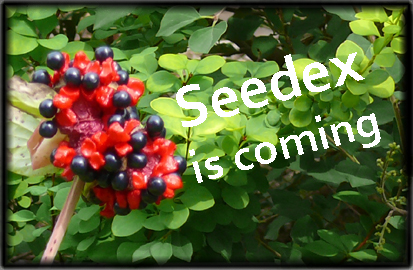Salvia sclarea has been in my garden for over 12 years and it is always a pleasure to see it. It is very fragrant, and makes a nice showing with long lasting flowers.
Salvia Sclarea v. Turkestanica, by Robert Pavlis[/caption]
There are two plants on the market with similar names; Salvia sclarea and Salvia sclarea v. turkestanica. According to the Kew plant database these are the same plant and Salvia sclarea is the correct name. Common names include clary sage, the clary, and European sage.
Salvia Sclarea v. Turkestanica, showing the bracts after flowering, by Robert Pavlis[/caption]
The clary is a biennial which makes a low rosset of leaves the first year and then a taller stem and flower the second year. It may even flower a third year and some suggest that cutting the flower stem off before it makes seed will encourage a second flowering year. My plants do not produce a lot of seedlings naturally, but there are always a few to bloom each year. It has also not strayed very far from its original location, except that it prefers seeding in the pathway rather than the garden bed. I just move a few back to the garden each year.
It has become invasive in some parts of the US.
The plant seems to flower a long time because the floral display is largely made up of bracts, which last a long time. The actual flowers are much shorter lived.
Salvia Sclarea v. Turkestanica, showing the flowers, by Robert Pavlis[/caption]
The plant and flowers are very oily and fragrant. It is more fragrant than most of the sages I grow. It has been used medicinally for at least a few hundred years and it is now used to add fragrance to perfumes and flavor to beer and spirits like vermouth. It is grown commercially in North Carolina, and must make a great smelling farm.
The leaves can be eaten raw or cooked, but they are mainly used to flavor other foods in the same way we use common sage (Salvia officinalis). Flowers can be eaten raw and sprinkled in salad. After writing this, I went to the garden to taste them - Yuck! I don't think they are edible.
Salvia sclarea
(SAL-vee-ah sklah-REE-ah)
Life Cycle: biennial
Height: 90 - 120 cm (3-4 ft)
Bloom Time: summer
Natural Range: Mediterranean region (southern Europe, central Asia and northern Africa)
Habitat: ??
Synonyms: Salvia sclarea v. turkestanica, Salvia turkestanica
Cultivation of Salvia sclarea:
Light: full sun
Soil: sandy, well drained
Water: moderate to dry, drought tolerant
USDA Hardiness Zone: 5- 9
Propagation: seeds
Gentiana angustifolia produces huge flowers relative to the size of the plant. This is one of the best plants in my rock garden and it should be added to every garden that specializes in small plants.
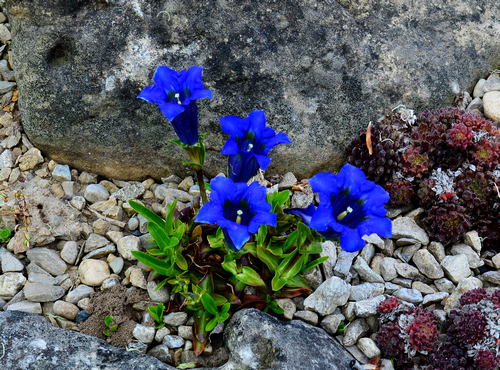
G. angustifolia is part of the Gentian acaulis group (the stemless to short stemmed gentians) and is very similar to G. acaulis. In nature and in horticulture these two species cross breed quite a bit and so this purchased plant could easily be a hybrid between the two. I am told that agustifolia is the easier of the two to grow because it is less demanding about soil pH. I have had no problems growing the plant pictured here. Because these gentians have a reputation of being difficult to grow, I kept it in the original pot and just sunk it in the ground over winter. Last spring I took cuttings, grew them in my raised rock garden and both have done very well.

Common names include stemless gentian, short-stemmed gentian or trumpet gentian. In the wild it grows at elevations up to 9,700 feet, in the limestone Alps of Western Europe. They prefer cool summers and don't do well in zones warmer than 7.
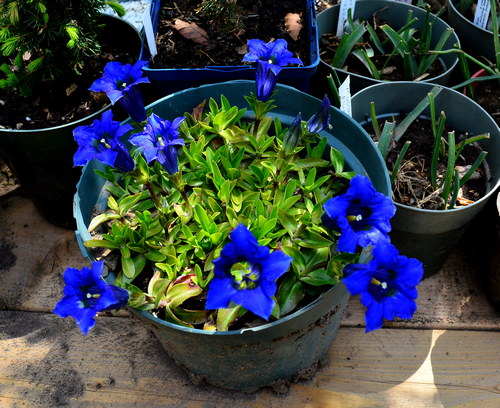
Gentiana angustifolia
(jen-shee-AN-uh an-gus-tee-FOH-lee-uh)
Life Cycle: perennial
Height: 10 cm (4 in) with flowers
Bloom Time: late spring
Natural Range: France, Italy, Spain, Switzerland
Habitat: alpine grasslands, rocky meadows, screes
Synonyms: Ciminalis angustifolia, Gentiana caulescens, Thylacitis angustifolia, Gentiana sabuada
Cultivation of Gentiana angustifolia:
Light: sun to part shade
Soil: variable, good drainage, limestone
Water: moderate to dry
USDA Hardiness Zone: 3 - 7
Propagation: seed, division
Cornus mas is a shrub or small tree that blooms very early in year, even before forsythia. It has attractive yellow flowers followed by red fruit that develops in fall. It does not make a big splash in the garden, but adds a nice touch to a shrub border.
Cornus mas, photo by Robert Pavlis
The Cornelian Cherry starts to flower very early as soon as the days get warm and it can even flower when there is still snow on the ground. It can also be pruned into an interesting small single or multi-trunk tree. It can sucker a bit.
Cornus mas, photo by Robert Pavlis
The fruit, properly called a drupe, can be eaten raw, but they contain a large pit and are very tart. They are most often used for making preserves. Birds do like them. A newly planted specimen can flower for several years before making fruit. They are self-fertile but produce more fruit if more than one plant is used to allow for cross-pollination.
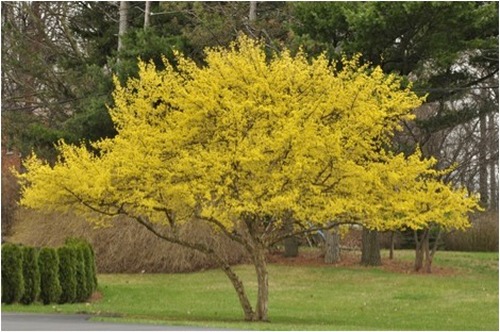
Cornus mas pruned into a tree, source: Philadelphia Orchard Project
A number of cultivars are available.
Variegata - has variegated leaves
Aurea - has golden leaves
Nana - is only 3 ft tall
Flava - has yellow fruit
Fructu Violaceo - produces purple fruit
Alba - has white fruit
Spring Glow - grows better in hot climates
Golden Glory - has larger flowers and fruit

Cornus mas fruit, source: Stark Bro's
(KOR-nus mass)
Life Cycle: shrub
Height: 5 m (15 ft)
Bloom Time: late winter
Natural Range: South-west Asia, South Europe
Habitat: dry deciduous forests and brushlands
Synonyms: n/a
Cultivation of Cornus mas:
Light: part shade to full sun
Soil: variable
Water: medium to dry
USDA Hardiness Zone: 3-8
Propagation: seed, softwood cuttings
Flueggea suffruiticosa is a rare shrub in gardens that is interesting, but not spectacular, until fall when it turns a beautiful golden color. It is quite architectural, presenting a weeping habit.
Flueggea suffruticosa aka Securinega suffruticosa, by Robert Pavlis
Flueggea suffruiticosa is a rare shrub in gardens that is interesting, but not spectacular, until fall when it turns a beautiful golden color. It is quite architectural, presenting a weeping habit. This shrub is grown for its leaves, small size and overall shape. The flowers are insignificant, but the fruit capsules are interesting as they dangle from the branches. It is dioecious, producing both male and female plants. Female flowers are single and male flowers are in clusters. Buying a male plant would ensure no self-seeding, but I am not sure named male cultivars are available. Mine was grown from seed and is female. Self-seeding has not been a problem.
Flueggea suffruticosa aka Securinega suffruticosa, by Robert Pavlis
It is one of the 50 fundamental herbs in Chinese herbalism, and is reported to cure a number of ailments including contusions, paralysis and neurasthemia. The plant does contain securinine, a central nervous system stimulant.
Flueggea suffruticosa aka Securinega suffruticosa, by Robert Pavlis
Video showing how to make root cuttings
Flueggea suffruiticosa
(FLOO-gee-a suf-roo-tee-KO-sa)
Life Cycle: shrub
Height: 2 m (6 ft)
Bloom Time: summer
Natural Range: China, Russia, Japan, Korea and Mongolia
Habitat: forest margins and slopes
Synonyms: Securinega suffruticosa, Securinega ramiflora, Securinega fluggeoides, Pharnaceum suffruitcosa, Xylophylla ramiflora
Cultivation of Flueggea suffruiticosa:
Light: full sun
Soil: variable
Water: drought tolerant
USDA Hardiness Zone: 3- 8
Propagation: seed, softwood cuttings
Hamamelis x intermedia 'Arnold Promise' is one of the most popular witch hazel cultivars, but that still makes it an uncommon plant to see in the garden. It is a small vase-shaped tree that can be kept quite small with pruning, so it will fit into any garden. It can even be grown as a small potted plant or bonsai.
Hamamelis x intermedia 'Arnold Promise', by Robert Pavlis
H. x intermedia is a cross between the Japanese witch hazel (H. japonica) and the Chinese witch hazel (H. mollis). The cultivar 'Arnold Promise' was developed at the Arnold Arboretum and named in 1963, and is commonly called the Arnold Promise witch hazel.
Hamamelis x intermedia 'Arnold Promise', by Robert Pavlis
Witch hazel cultivars are difficult to propagate and are normally sold as grafted plants. H. x intermedia is usually grafted on the North American native, H. virginiana which commonly suckers. These need to be removed in order to maintain the cultivar.
Video showing you how to remove suckers
In my alkaline, clay soil, they are slow to establish themselves, but they don't seem to have a problem in these conditions. H. virginiana blooms in late fall and H. x intermedia bloom in late winter. Arnold Promise is one of the last to flower and usually flowers when there is still snow on the ground. The foliage turns an attractive yellow-to-orange color in the fall.
Witch hazel wood is used for dowsing, also called witching, a method used to locate water. You hold a Y-shaped branch as you walk across the ground and when it points down you have found underground water. A friend of mine, that drills wells, told me that he always carries such a stick in his truck. Some customers will only drill if he witched the land to find the water, so he would go through the process to keep them happy. Although this belief is held by many, it is a complete myth and has no scientific basis.
Hamamelis x intermedia 'Arnold Promise', by Robert Pavlis
Other popular cultivars include Diane with copper-red flowers, Copper Beauty has coppery-orange flowers and Ruby Glow which has copper-red flowers and much better fall color. Each witch hazel requires a different chill period before it flowers which results in each one flowering at a different time.
I brought some stems in the house this winter and was amazed as how well they did. It only takes a few days for the flower buds to open and they last about 2 weeks. I think I actually prefer them as forced branches rather than leaving them outside.
Video showing you how to force branches
Hamamelis x intermedia 'Arnold Promise'
(ham-uh-MEE-lis in-ter=MEE-dee-a)
Life Cycle: shrub
Height: 5 m (15 ft)
Bloom Time: late winter
Natural Range: n/a
Habitat: mollis - forests, japonica - mountains
Synonyms: n/a
Cultivation of Hamamelis x intermedia 'Arnold Promise':
Light: part shade to full sun, flowers best in full sun
Soil: acidic, humusy
Water: moderate
USDA Hardiness Zone: 5- 9
Propagation: difficult by cuttings, seeds need two chill periods

